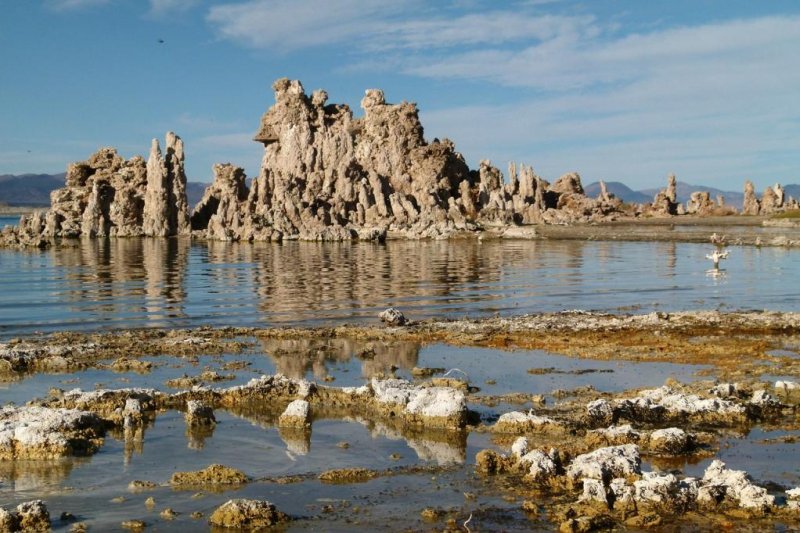Soda lakes feature high rates of evaporation, which results in a salty, alkaline solution. Photo by
Needpix/CC
Dec. 30 (UPI) -- Phosphorous is one of the six main chemical ingredients necessary for life. Phosphorous atoms form DNA and RNA molecules, the building blocks of life's genetic code, but until now, scientists assumed the element was in short supply on primordial Earth.
In a new study, published Monday in the journal PNAS, scientists provide evidence that ancient soda lakes could have provided sufficient levels of phosphorous to spawn life.
Soda lakes, sometimes called alkaline lakes, are lakes featuring high rates of evaporation. The water left behind is salty and features a high pH, or low acidity. Samples collected from soda lakes across the world showed the carbonate-rich water can boast up to 50,000 times the levels of phosphorous found in the ocean.
"In most lakes, phosphate is limited because calcium combines with the phosphate to precipitate minerals called apatite," Jonathan Toner, a University of Washington research assistant professor of Earth and space sciences, told UPI in an email. "This doesn't happen in soda lakes because these lakes have very high concentrations of carbonate."
"Carbonate competes with phosphate to combine with calcium, and at the very high carbonate levels found in these lakes, calcium is removed by carbonate, not phosphate," Toner said. "This allows phosphate to accumulate. It's a fairly straightforward idea, which is part of its appeal."
To ensure the modern soda lakes were representative of the kind of environments that might have existed on early Earth, scientists conducted experiments and built models to measure the effects of modern biological activity on soda lake chemistry.
"First, we did lab experiments in the absence of biology to show that phosphate accumulates. Second, our models only take into account inorganic chemistry," Toner said. "Regardless, biology is active in many lakes all over the world, but all lakes (except for carbonate-rich ones) do not have high phosphate. So biology alone cannot cause high phosphate in lakes."
The analysis showed that even without biological activity, there would have been plenty of phosphorous available in soda lakes. There also would have been plenty of soda lakes.
"Soda lakes form in atmospheres high in carbon dioxide, and in the presence of fresh volcanic material," Toner said. "The early Earth satisfies both of these criteria. Models of the atmospheres of the early Earth indicate up to 1000 times more carbon dioxide than today. Plus, the early Earth would have been much more volcanically active because of a hotter mantle."
Previous research conducted by Toner and his colleague David Catling, a Washington professor of Earth and space sciences, suggested soda lakes can also generate significant levels of cyanide, which assists the formation of amino acids and nucleotides, the building blocks of proteins, DNA and RNA.
Most researchers investigating the origins of life are biochemists, but Toner's expertise is in geochemistry. One reason the phosphate problem persisted for so long, Toner estimates, is that biochemists didn't know where to look for large amounts of natural occurring phosphorous.
Toner and his colleagues hope to learn more about the potential for soda lakes to support primordial life by conducting further investigations of the inorganic and organic chemistry present in modern carbonate-rich lakes.















